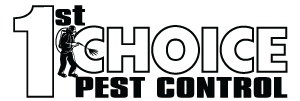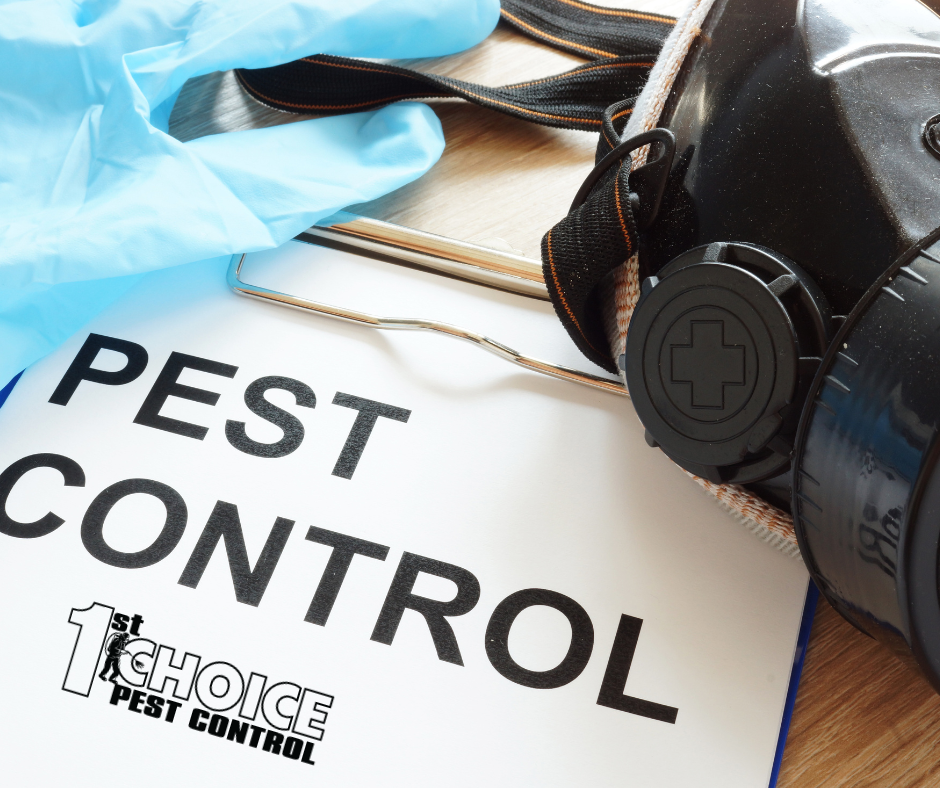Effective pest Control Strategies for Prevention: Pest-Free Home
Maintaining a pest-free home is essential for the well-being and comfort of your family. Effective pest control strategies not only protect your property but also safeguard against potential health risks associated with pest infestations. In this blog post, we will explore various strategies and techniques to help you keep your home pest-free. From understanding common household pests to implementing preventive measures and utilizing safe pest control methods, we will provide valuable insights and practical advice. Join us as we delve into the world of effective pest control, empowering you to create a safe, healthy, and pest-free environment for you and your loved ones.
Understanding Common Household Pests:
To effectively combat pests, it’s crucial to have a basic understanding of the common household pests that may invade your living space. By recognizing their characteristics, habits, and potential risks, you can implement targeted prevention and control strategies. Here are some key points to consider:
1. Ants:
– Identification: Ants are social insects that form colonies. They come in various species and sizes, with distinct body features such as segmented bodies and elbowed antennae.
– Habits and Risks: Ants are attracted to food sources and can quickly infest areas where they find sustenance. Some species, like carpenter ants, can cause structural damage by excavating wood. Additionally, certain ants may bite or sting, posing risks to humans.
2. Cockroaches:
– Identification: Cockroaches are resilient insects with flat bodies, long antennae, and rapid movement. They are commonly found in warm and moist areas.
– Habits and Risks: Cockroaches are nocturnal and can contaminate food, surfaces, and utensils with disease-causing bacteria. They are associated with allergic reactions and can trigger asthma symptoms in some individuals.
3. Rodents (Rats and Mice):
– Identification: Rats and mice are small mammals with a compact body structure, a long tail, and a pair of incisor teeth that continuously grow.
– Habits and Risks: Rodents seek shelter, food, and water sources indoors. They can cause extensive damage by gnawing on structures, wires, and insulation. Moreover, rodents are carriers of diseases and can contaminate food with their droppings and urine.
4. Spiders:
– Identification: Spiders have two body parts, eight legs, and can range in size and appearance depending on the species.
– Habits and Risks: While most spiders are harmless and beneficial by controlling other pests, some species like black widows or brown recluses have venomous bites that pose health risks. Spiders typically prefer undisturbed areas and can enter homes through cracks or openings.
Understanding the characteristics and risks associated with these common household pests allows homeowners to be proactive in their pest control efforts. By familiarizing yourself with their habits and potential threats, you can tailor prevention strategies and take appropriate measures to minimize the chances of infestations.
Prevention is Key:
When it comes to pest control, prevention plays a vital role in keeping your home pest-free. By implementing effective preventive measures, you can reduce the likelihood of pests entering and establishing themselves in your living space. Here are essential tips for effective pest prevention:
1. Seal Entry Points:
– Inspect and seal any gaps, cracks, or openings in your home’s exterior, including doors, windows, foundations, and utility penetrations.
– Ensure weather stripping is intact and screens are in good condition to prevent pests from entering.
2. Remove Food Sources:
– Keep food stored in airtight containers and promptly clean up spills or crumbs.
– Properly dispose of garbage in sealed containers and regularly empty them.
– Avoid leaving pet food out overnight and clean pet feeding areas regularly.
3. Maintain Cleanliness and Hygiene:
– Regularly clean your home, paying attention to areas where food particles, spills, or debris may accumulate, such as kitchens, dining areas, and pet zones.
– Vacuum carpets, rugs, and upholstery frequently to eliminate potential hiding places for pests.
– Keep storage areas organized and clutter-free to reduce pest harborage areas.
4. Proper Waste Management:
– Seal trash bags tightly and dispose of them regularly, especially food waste.
– Clean outdoor trash cans and ensure they have tight-fitting lids to prevent pest access.
– Compost responsibly and avoid adding pest-attracting materials like meat, dairy, or greasy items.
5. Maintain Yard and Landscape:
– Trim shrubs and trees away from the house to prevent pests from using them as pathways.
– Remove any debris, leaf piles, or standing water in the yard, as they can attract pests.
– Regularly mow the lawn and keep it well-maintained to discourage pests from nesting.
6. Address Moisture Issues:
– Fix any leaks or plumbing issues promptly, as excess moisture attracts pests like cockroaches and rodents.
– Ensure proper ventilation in bathrooms, kitchens, and other areas prone to humidity to prevent mold growth and pest infestations.
By implementing these preventive measures, you create an environment that is less attractive to pests, reducing the chances of infestations. Prevention is a proactive approach that helps you maintain a pest-free home and minimizes the need for reactive pest control measures.
Regular Cleaning and Maintenance:
Maintaining a regular cleaning and maintenance routine is crucial for effective pest control. By focusing on cleanliness and addressing potential pest habitats, you can create an environment that is less inviting to pests. Here are key aspects to consider:
1. Routine Cleaning:
– Regularly sweep, mop, and vacuum floors to eliminate food particles, crumbs, and debris that can attract pests.
– Clean countertops, stovetops, and other food preparation areas to remove residue and spills that may entice pests.
2. Wipe Down Surfaces:
– Clean and disinfect surfaces, particularly in areas where food is handled or consumed, such as kitchens, dining areas, and pet feeding zones.
– Pay attention to areas prone to moisture, such as bathrooms, and ensure they are kept clean and dry.
3. Pest-Proof Storage:
– Store food items in airtight containers made of glass, metal, or sturdy plastic to prevent pests from accessing and contaminating them.
– Check expiration dates regularly and discard expired products to avoid attracting pests.
4. Decluttering:
– Regularly declutter your home, as piles of clutter provide hiding places for pests. Keep storage areas organized and free of unnecessary items.
– Remove cardboard boxes, stacks of newspapers, and other materials that pests can use as nesting sites.
5. Proper Pet Care:
– Keep pet areas clean and tidy, regularly washing pet bedding and bowls.
– Promptly clean up pet waste in the yard to discourage pests from being attracted to the area.
6. Maintenance Checks:
– Conduct regular inspections of your home’s plumbing system, including faucets, pipes, and drains, to identify and address any leaks or moisture issues that could attract pests.
– Inspect window screens for tears or gaps, ensuring they are intact to prevent pests from entering.
By incorporating regular cleaning and maintenance practices into your routine, you eliminate potential food sources, reduce hiding spots, and maintain a clean and uninviting environment for pests. This proactive approach significantly reduces the risk of infestations and promotes a pest-free home.
Effective Indoor Pest Control Methods:
While prevention is the first line of defense against pests, occasional indoor pest control measures may be necessary. Here are some effective methods to control pests indoors:
1. Baits and Traps:
– Use bait stations or traps to attract and eliminate pests like ants, cockroaches, and rodents. These devices are designed to lure pests and prevent them from returning to your living spaces.
2. Insecticides:
– Select insecticides specifically formulated for the targeted pests. Follow label instructions carefully, applying the products in appropriate areas to minimize risks to humans and pets.
3. Natural Remedies:
– Consider natural pest control alternatives such as essential oils, diatomaceous earth, or vinegar solutions for repelling insects like ants or flies. These natural remedies can be effective and safer alternatives in certain situations.
4. Professional Pest Control:
– In cases of severe infestations or persistent pest problems, it’s advisable to seek professional pest control services. Pest control professionals have the expertise, experience, and access to specialized treatments to effectively eliminate pests and prevent future infestations.
When using indoor pest control methods, it’s essential to follow instructions carefully, use appropriate protective gear, and ensure the safety of family members and pets. If unsure about the best approach, consult with a pest control professional for guidance and assistance.
Natural and Eco-Friendly Pest Control Options:
For those seeking environmentally friendly pest control solutions, several natural and eco-friendly options are available. These alternatives minimize the use of chemical-based products while effectively repelling or eliminating pests. Consider the following natural remedies:
1. Essential Oils:
– Essential oils such as peppermint, eucalyptus, or lavender are known for their pest-repelling properties. Dilute them with water and spray the mixture around entry points, windows, or areas where pests are commonly found.
2. Diatomaceous Earth:
– Diatomaceous earth is a natural substance derived from fossilized algae. It is effective against insects like ants, cockroaches, and fleas. Sprinkle a thin layer of diatomaceous earth in areas where pests frequent, such as corners, cracks, or under appliances.
3. Biological Controls:
– Biological controls involve introducing natural predators or parasites to control specific pests. For example, ladybugs can be released in gardens to control aphids, a common plant pest.
4. Vinegar Solutions:
– Vinegar, particularly white vinegar, is a versatile ingredient that can deter pests like ants and fruit flies. Create a mixture of equal parts vinegar and water and use it to wipe down surfaces or spray in areas where pests are present.
Natural pest control methods provide a safer and eco-friendly approach to pest management. While these options can be effective, it’s important to remember that their efficiency may vary depending on the pest species and the severity of the infestation. Experiment with different natural remedies and combinations to find what works best for your specific pest control needs.
Outdoor Pest Control Strategies:
Maintaining a pest-free environment extends beyond the indoor spaces. Effective outdoor pest control strategies help protect your yard, garden, and outdoor living areas. Consider the following tips:
1. Organic Gardening Practices:
– Practice organic gardening methods, such as using natural fertilizers, companion planting, and rotating crops, to promote plant health and discourage pest infestations.
2. Proper Landscaping:
– Keep plants well-maintained, trim overgrown vegetation, and remove any debris or clutter that may serve as pest harborage areas.
3. Barriers and Repellents:
– Install physical barriers like mesh screens or fences to prevent pests from accessing specific areas.
– Utilize natural repellents like citronella candles or essential oil-based sprays to deter mosquitoes and other insects during outdoor activities.
4. Regular Inspection and Maintenance:
– Inspect outdoor structures, including sheds, fences, and decks, for signs of damage or potential entry points for pests. Seal any openings or cracks to prevent pest access.
5. Water Management:
– Avoid overwatering plants and address any drainage issues to prevent standing water, which can attract mosquitoes and other water-loving pests.
6. Integrated Pest Management (IPM):
– Adopt an integrated pest management approach, combining preventive measures, natural controls, and targeted treatments as needed. This holistic approach helps maintain a balance between pest control and environmental sustainability.
By implementing outdoor pest control strategies, you can create an outdoor environment that is less inviting to pests, reducing their presence and minimizing potential infestations. Outdoor pest management is particularly important for preserving the enjoyment of your outdoor spaces and protecting plants from pest damage.
The Importance of Professional Pest Control Services:
While many pest control measures can be handled by homeowners, certain situations warrant professional assistance. Here are reasons why professional pest control services are beneficial:
1. Expertise and Knowledge:
– Pest control professionals have extensive knowledge of pest behavior, biology, and control methods. They can accurately identify pest species and devise appropriate treatment plans.
2. Customized Solutions:
– Professionals tailor pest control solutions to the specific pest species and the unique needs of your home. They provide targeted treatments that address the root causes of infestations.
3. Integrated Approach:
– Pest control professionals follow integrated pest management (IPM) principles, combining prevention, monitoring, and targeted treatments. This approach minimizes the use of pesticides and focuses on long-term pest management.
4. Safety Measures:
– Pest control professionals are trained to handle pesticides safely, minimizing risks to humans, pets, and the environment. They follow strict safety protocols to protect your family and property.
5. Ongoing Maintenance:
– Professional pest control services often include ongoing monitoring and maintenance programs to ensure long-term pest prevention and control. They can provide regular inspections, treatments, and guidance for maintaining a pest-free home.
When dealing with severe infestations, persistent pest problems, or if you prefer a hands-off approach, consulting a professional pest control service is a prudent choice. Their expertise, experience, and access to specialized treatments can effectively eliminate pests and provide peace of mind.
Dealing with Specific Pest Infestations:
Different pests require specific approaches for control and elimination. Here are strategies for dealing with common household pests:
1. Ants:
– Locate and eliminate ant trails by using ant baits or natural repellents like vinegar or peppermint oil. Seal entry points and remove food sources to deter them.
2. Cockroaches:
– Employ baits, traps, or insecticidal dust to target cockroaches. Keep areas clean, reduce moisture, and eliminate hiding spots to prevent infestations.
3. Rodents (Rats and Mice):
– Set traps or use bait stations to capture rodents. Seal entry points, eliminate food sources, and keep spaces tidy to discourage their presence.
4. Spiders:
– Reduce spider populations by removing their food sources, such as insects, through proper pest control methods. Seal entry points and keep areas clean to minimize their habitats.
Tailor your pest control strategies based on the specific pests you are dealing with, their habits, and the severity of the infestation. If the infestation persists or becomes unmanageable, professional assistance should be sought.
Long-Term Pest Management and Maintenance:
Maintaining a pest-free home is an ongoing effort. Long-term pest management and regular maintenance are essential for sustainable results. Consider the following practices:
1. Ongoing Monitoring:
– Regularly inspect your home for signs of pest activity, such as droppings, chewed wires, or unusual odors. Promptly address any indications of infestations.
2. Regular Inspections:
– Schedule periodic inspections by pest control professionals to assess your home’s vulnerability to pests and address any potential issues proactively.
3. Timely Repairs:
– Fix any plumbing leaks, seal cracks or openings, and repair damaged screens or structures promptly to prevent pest entry.
4. Education and Awareness:
– Stay informed about common pests in your area, their behavior, and effective prevention strategies. Educate family members about pest control practices to promote a collective effort.
5. Professional Maintenance Programs:
– Consider enrolling in professional maintenance programs that offer regular inspections and treatments to maintain a pest-free environment.
By adopting a long-term perspective and staying vigilant, you can effectively manage pests and minimize the risk of future infestations. Consistency and proactive measures are key to ensuring a pest-free home environment.
Conclusion:
Effectively keeping your home pest-free requires a combination of preventive measures, regular cleaning and maintenance, targeted control methods, and, if needed, professional assistance. By understanding common household pests, implementing preventive strategies, and using safe and effective pest control techniques, you can create a home environment that is less inviting to pests.
Remember, prevention is key, and consistent efforts are necessary for long-term pest management. By incorporating these strategies into your routine and staying informed about the latest pest control practices, you can protect your family, property, and the overall well-being of your home. With a proactive and integrated approach to pest control, you can enjoy a comfortable, healthy, and pest-free living environment.



 Service Request
Service Request